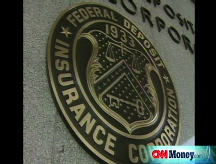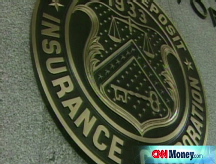Problem banks: What you need to know
The FDIC is keeping close tabs on 117 banks. Here are answers to common questions about how the agency IDs troubled banks.
NEW YORK (CNNMoney.com) -- With the number of troubled banks on the rise, many Americans are wondering whether their bank is safe.
The bottom line: the vast majority of banks are in good shape, and when banks do fail, customers rarely lose money because most deposits are insured. (Read more about FDIC insurance.)
But the troubles facing the banking industry raise questions about how regulators identify troublesome banks - what the FDIC calls its "problem list."
According to data released on Tuesday, the list included 117 banks in the second quarter, up from 90 at the end of March. The number has been increasing since the third quarter of 2006, when it hit a historic low of 47. Assets at the problem institutions totaled $78.3 billion in the second quarter, up from $26.3 billion.
Problem banks have serious deficiencies in their finances, operations or management that threaten their continued viability. The Federal Deposit Insurance Corp. publishes the number of banks in this condition in its Quarterly Banking Profile report.
The agency doesn't reveal the banks' names, but it does give the total assets of these institutions.
Each bank in the country is examined at least every 12 to 18 months. Regulators rate the banks on a scale of 1 to 5, with 1 being the best. Factors that go into the ratings include: management controls, earnings, quality of assets, capital levels (which cushion against loan losses) and liquidity (which allows banks to meet their obligations, such as withdrawals by depositors).
Examiners are looking for problems such as an abundance of delinquent loans without sufficient reserves to cover the losses, weak risk management policies or a lack of cash to cover withdrawals.
Regulators then give the banks a report card, assigning a composite rating based on the bank's performance in each category. Those that receive a rating of 4 or 5 are put on the list.
The bank's executives see a lot of regulators during this time. Bank officials are told what steps they have to take to shore up their business.
"The management of the bank has to address the problems that got them into the penalty box in the first place," said Christopher Whalen, managing director of Institutional Risk Analytics.
If the bank can't correct the problems, it either sells itself to another institution or it is taken over by the FDIC.
Only 13% on average. So far this year, nine banks with a total of $40 billion in assets ($32 billion of which were at IndyMac) have failed - a far cry from the turbulent times of the savings and loan crisis of the early 1990s, when more than a thousand institutions shut down.
Since most banks on the list don't fail, the agency wants to prevent making things worse by scaring customers, vendors and other players in the financial system while regulators are working with a problem bank.
"Regulators can give banks frank evaluations of their condition without threatening their stability," said Chip MacDonald, partner in the capital markets group at Jones Day, a law firm.
Considering there are about 8,500 banks in the United States, the number of problem banks is not that large, said L. William Seidman, a former FDIC chairman. During the S&L crisis in the late 1980s and early 1990s, about 1,500 banks were on the problem list.
"Just because a bank is on the list doesn't mean it's going to fail," Seidman said. "If customers have deposits of under $100,000, they don't have to worry. They will get their money." ![]()





